Why a Distraction-Free Study Space Matters for AP Students
AP courses ask more of students than many standard high school classes: deeper thinking, sustained practice, and a familiarity with college-level pacing. For many teenagers, home is where late-afternoon review sessions, weekend practice exams, and last-minute essay polishing happen. As a parent, your support in creating a focused, welcoming study environment can be the difference between stressed, scattered study and efficient, confident preparation.
This guide is written for busy parents who want practical, humane steps — not a list of dos and don’ts that feel punitive. You’ll find simple setup tips, psychology-friendly strategies to reduce distraction, routines that respect teen autonomy, and ideas for using personalized support (including how services like Sparkl’s personalized tutoring can fit naturally into your student’s plan).
What “Distraction-Free” Really Means
Distraction-free doesn’t mean sterile or silent. It means designing a space and a set of habits so the student’s attention stays on learning without constant interruptions. A distraction-free space balances comfort and structure, supports sustained concentration, and makes it easier for the student to switch into “study mode” and out again without friction.
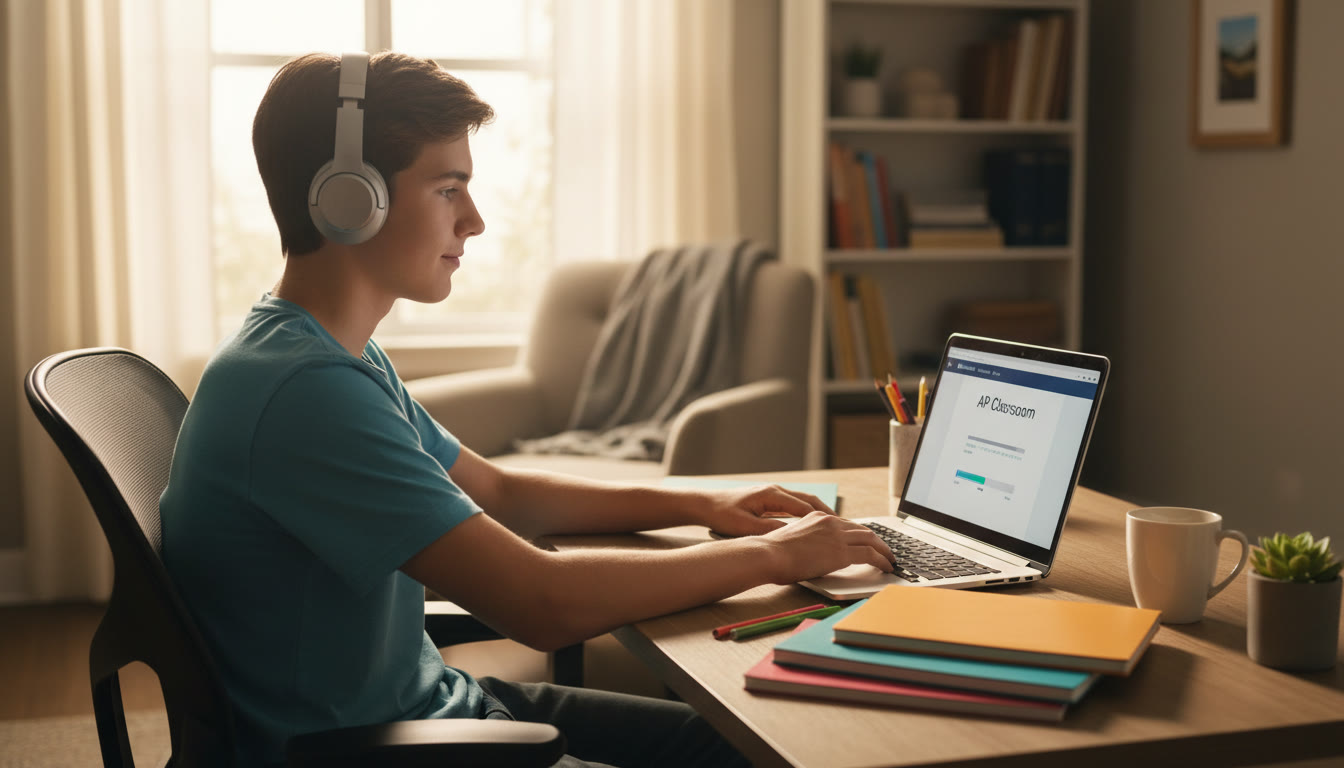
Step 1 — Choose the Right Spot (and Make It Yours)
Picking the ideal location is the foundation. Every home has trade-offs, and the goal is to find the place that offers the best combination of light, privacy, and routine compatibility.
What to look for
- Natural light or warm task lighting to reduce eye strain and improve mood.
- A surface that’s large enough for textbooks, notes, and a laptop; consider a small side table for calculators or reference sheets.
- Reasonable quiet — not necessarily complete silence. Background household sounds are okay; it’s the unpredictable interruptions that are harmful.
- Proximity to snacks, restroom, and family areas — close enough to be practical, far enough to minimize drop-in interruptions.
- A place the student feels comfortable claiming as their study area — personalization boosts ownership and responsibility.
Good options (and when to avoid them)
- Quiet corner of the bedroom — great for evening or solo, but avoid if the student gets sleepy studying in bed.
- Dining table — works well for family accountability and occasional group study; rotate to a quieter spot for deep-focus sessions.
- Home office or spare room — ideal if available, especially for timed exam practice, but not required for effective studying.
Step 2 — Set Up the Physical Space: Functional, Calm, and Personal
The right furniture and small, smart investments can make study feel less like a chore and more like a habit. You don’t need to spend much — focus on function and sensory comfort.
Essentials to include
- Comfortable chair with good posture support to avoid discomfort during long sessions.
- Task lamp with adjustable brightness and color temperature (warm light for reading, cooler for alert tasks).
- Organizers for pens, highlighters, sticky notes, and chargers — visual clutter is a hidden distractor.
- A single-lined whiteboard or corkboard for visible goals, deadlines, and small checklists.
- Noise-control tools: soft furnishings, a rug, or noise-cancelling headphones for focus sessions.
How to arrange materials
Keep only what’s needed for the current session on the desk. Use drawers or a small shelf for reference books and past tests. Use labeled folders or a binder system for:
- Current unit notes
- Practice exams and graded work
- Reference sheets (formula lists, historical timelines, vocabulary lists)
Step 3 — Create Tech Boundaries That Actually Work
Technology is both a study tool and the biggest source of distraction. The aim is to make tech deliberate, not addictive.
Practical, non-confrontational rules
- Have a “study-only” charging station in another room for phones during deep-focus blocks.
- Encourage use of study apps and timers (Pomodoro-style) that block distracting apps for set periods.
- Allow tech for specific study tasks (video lessons, digital practice tests) and require switching to paper for some activities — mixing mediums can strengthen learning.
- Agree on signals for when interruptions are okay (a short knock, a text for emergencies) and when they aren’t (no drop-ins during a timed practice exam).
Tools and features to consider
- Built-in focus modes on phones and computers (set daily schedules during homework hours).
- Website blockers for social platforms during study blocks.
- Headphones and ambient focus playlists or white-noise apps if complete silence is distracting.
Step 4 — Routines and Rituals: The Psychology of Starting
Humans are ritual-driven. With students, a short, repeatable pre-study ritual can dramatically reduce procrastination and help attention engage more quickly.
Example pre-study rituals (choose one and keep it consistent)
- Two-minute desk tidy + 1-minute deep breath + 25-minute focused study (Pomodoro).
- Review the day’s goal list, set a 45-minute timer, and start with the hardest problem for 15 minutes.
- Brief review of a flashcard stack (5 minutes) and then a 30-minute practice set on paper.
Rituals are powerful because they reduce the number of decisions the brain has to make. Less decision fatigue = more study time.
Step 5 — Personalization: Make the Space Reflect Your Student
Teenagers are more likely to protect and use a space they feel they own. Little touches of personalization go a long way, as long as they don’t turn into clutter.
Ideas that boost ownership
- Allow a few meaningful decorations: a favorite quote, a small plant, or a photo that evokes calm.
- Let your student choose their desk lighting or a study playlist — agency increases buy-in.
- Use color-coded supplies or folders that match their favorite colors to make organization fun.
Step 6 — Design for Different Types of Study
AP preparation requires different study modes: reading and note-taking, problem-solving, timed practice exams, and review sessions. It’s helpful to plan how the space supports each type.
| Study Mode | Setup Tips | When to Use |
|---|---|---|
| Focused Reading & Note-Taking | Good desk lamp, minimal tech, reference materials nearby. | New chapter reading, annotating passages, reviewing class notes. |
| Problem Solving | Large surface for scratch work, calculator ready, extra paper. | Math, physics, chemistry practice, and long-form free-response questions. |
| Timed Practice Tests | Quiet room, full exam materials, neutral wall for focus, phone out of reach. | Simulated AP exams and full-section timed practice. |
| Review & Memory Work | Flashcards, whiteboard, spaced-repetition app if used, short sessions. | Daily vocabulary, formula review, and quick recall practice. |
Step 7 — Schedule Blocks, Not Hours: Protect Focused Time
Long, undefined “study time” can drift quickly into low-value activities. Instead, help your student block out focused study sessions in their calendar with clear goals for each block.
Sample weekly plan for an AP student (flexible)
- Monday: 45-minute focused content review (AP Biology) + 15-minute flashcard session
- Tuesday: 60-minute problem set (AP Calculus) with 10-minute summary notes
- Wednesday: 2 x 30-minute mixed practice (short breaks in between)
- Weekend: One timed practice section (simulate conditions) + target review
Include short breaks and a weekly “wrap-up” meeting with the student to set priorities. The goal is consistent, measurable progress, not marathon cramming.
Step 8 — Accountability That Builds Autonomy
Teens respond better to collaborative, trust-based accountability than to strict monitoring. Aim for transparent planning, not policing.
Low-friction accountability ideas
- Weekly planning conversation: student lists two goals for each class; parent listens and offers logistical support.
- Visible progress tracker on a whiteboard — the student updates it after study sessions rather than the parent checking.
- Encourage regular reflection: what worked this week? What didn’t? Small adjustments build agency.
Step 9 — When to Bring in Extra Help
Sometimes the best way to reduce distraction and stress is to get targeted support. If your student consistently struggles with pacing, content gaps, or test strategy, consider personalized tutoring. One-on-one tutoring can make study time more efficient by focusing on the student’s specific weaknesses and keeping practice sessions purposeful.
Services like Sparkl’s personalized tutoring can fit naturally into this approach: tailored study plans, expert tutors who model effective study strategies, and even AI-driven insights that help pinpoint which topics need the most attention. When tutoring aligns with your student’s study space and schedule, it amplifies every minute they spend studying at home.
Step 10 — Troubleshooting Common Problems
Even with the best setup, things will go off track. Here are common issues and practical fixes.
Issue: The student reports being distracted by family noise
- Fix: Set predictable “quiet hours” during study blocks, or move to a different room during intense practice sessions.
Issue: The phone is the main distraction
- Fix: Try a phone basket or scheduled app blocks. Make an explicit plan for short social-check breaks after focused sessions.
Issue: Student procrastinates with “small tasks” instead of starting work
- Fix: Encourage a 5-minute “start” rule: commit to five minutes of work. Most sessions naturally extend beyond this once momentum builds.
Issue: Study sessions feel joyless and draining
- Fix: Inject variety and rewards — alternate heavy and light tasks, schedule brief social check-ins, and celebrate milestones.
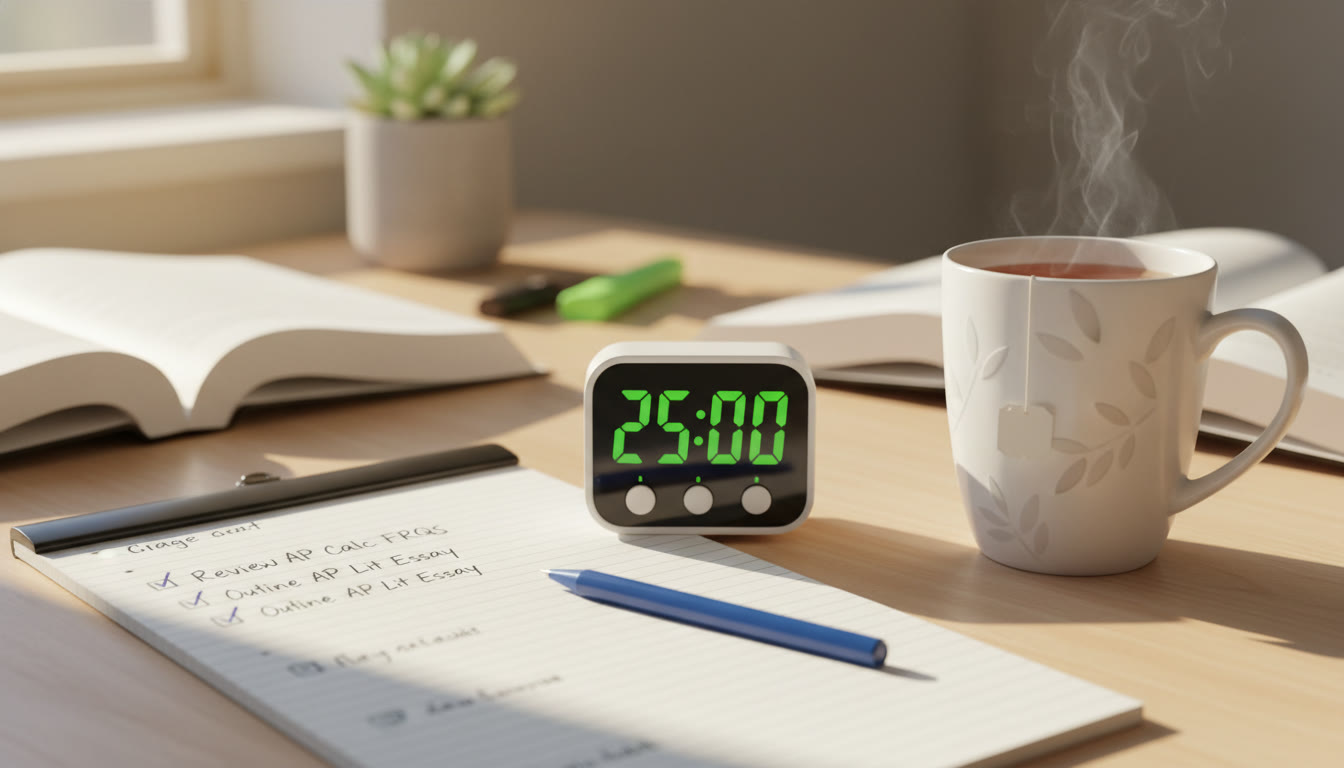
Measuring What Matters: Progress Over Perfection
Parents often try to measure success by hours logged. Instead, encourage metrics that reflect learning: improvement on practice questions, reduced time per problem, clearer explanations in the student’s own words, and more consistent use of effective study routines.
Simple progress tracker you can use
- Track three data points weekly: practice score, topics corrected, and time spent on targeted review (not total time).
- Use the table below to log one month and spot trends (sample structure).
| Week | Practice Score | Topics Missed | Targeted Review Time | Notes |
|---|---|---|---|---|
| Week 1 | 72% | Integration Techniques, Kinetics | 3 hours | Started timed practice; needs pacing strategy. |
| Week 2 | 78% | Integration Techniques | 2.5 hours | Improved after targeted tutoring session. |
| Week 3 | 82% | Minor sign errors | 2 hours | Focus on accuracy; shorter, deliberate practice worked well. |
Putting It All Together: A Sample Evening Routine
Consistency beats intensity. Here’s an example evening routine that balances family life, rest, and purposeful AP study time.
Sample routine (weeknight)
- 5:30 pm — Light dinner and family check-in (unplugged).
- 6:15 pm — 10-minute desk tidy + review session goals.
- 6:30 pm — 45-minute focused study block (phone in basket, Pomodoro 25/5 as needed).
- 7:15 pm — 15-minute break (walk, snack, chat).
- 7:30 pm — 30-minute lighter review or homework wrap-up.
- 8:15 pm — Put study materials away and set a 10-minute plan for tomorrow.
Short, predictable routines reduce friction and make it more likely your student will enter study mode without internal resistance.
How Parents Can Support Without Micromanaging
Your role is to create conditions for success: a reliable space, reasonable boundaries, and compassionate accountability. Ask open-ended questions instead of giving commands. Listen to what is and isn’t working. Small acts — replacing a burnt-out lamp, ordering a set of color-coded folders, or scheduling a weekly planning chat — communicate support more effectively than constant reminders.
When to Reassess and Evolve the Space
Kids change; needs change. What works in September might feel stale by March. Reassess every 6–8 weeks: is the space still used? Are materials still organized? Is the student’s attention improving? If progress stalls, a short refresh — new lighting, a different chair, or a switch from desk to table for a week — can re-energize habits.
Questions to guide reassessment
- Is the student completing higher-quality study sessions or just more time?
- Are interruptions fewer or more frequent?
- Does the student feel ownership over the space?
Final Thoughts: Small Investments, Big Returns
Creating a distraction-free study space is less about perfection and more about being intentional. A comfortable chair, a lamp that doesn’t glare, a clear place to put a phone, and a tiny ritual before each session — those small changes compound. They help your teenager trade friction for momentum and confusion for clarity.
When you pair a thoughtful study environment with purposeful routines and, if needed, personalized support like Sparkl’s tutoring — which can bring tailored study plans, 1-on-1 guidance, and data-informed insights into your student’s progress — you create an ecosystem where focused effort turns into real improvement. That’s the goal: steady progress, less stress, and a student who feels equipped and confident walking into the AP exam room.
Parting tip for parents
Be patient. The most successful study spaces are the ones that evolve with the student, respect their autonomy, and reflect small, consistent choices more than dramatic overhauls. With thoughtful setup and supportive routines, your AP student can build a habit of focused studying that lasts well beyond test day.



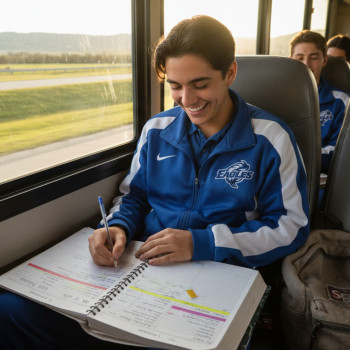
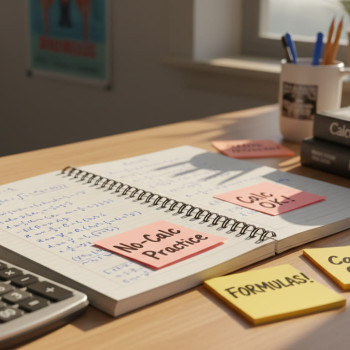

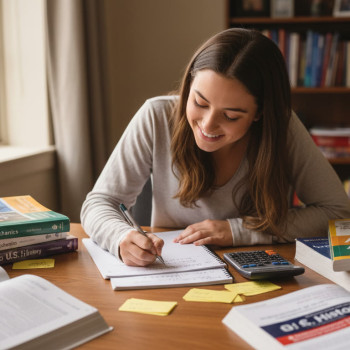
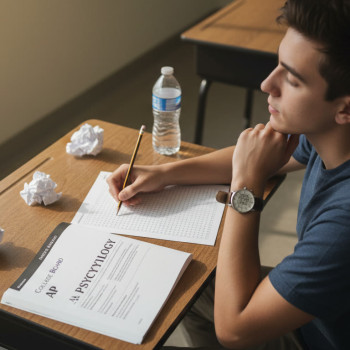













No Comments
Leave a comment Cancel